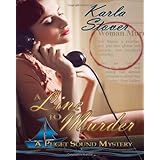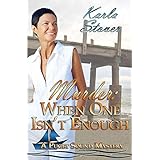 |
How the Calgary Stampede Inspired my Murder Mystery Novel
My first published writing was a travel article
about the Calgary Stampede in The
Montreal Gazette newspaper (May 1,
1993). At the time, I was living in Montreal and had no clue I’d be moving to
Calgary three years later.
 |
| Saddledome, fairgrounds site and Calgary skyline |
In
the summer of 1992, my husband and I had made a trip west with our two young sons.
Our holiday goals were to see the Rocky Mountains and visit a cousin who
lived in Calgary. As I was looking through travel information, I noticed we’d
arrive in Calgary the last day of the Stampede. Why not buy tickets to the
rodeo? I didn’t expect the festival to be much more than that and didn’t allow
any time for other
Stampede activities.
When we
got to the fairgrounds, I was surprised by the extent of the offerings. A
hilarious hypnosis show, many other shows, midway rides, a marketplace. I even
liked the food. And we didn’t touch on all the rest—the downtown parade on
opening day, free pancake breakfasts, everyone dressed in western wear, stores
decked out with bales of hay, the party atmosphere in the city.
 |
| Calgary Stampede parade |
I
figured if I was ignorant of the Stampede’s scope, it’s likely my fellow
Montrealers were too. In the fall, I signed up for my first creative writing
course, Magazine Writing. Our final
assignment was to write a non-fiction piece and a query letter targeted at a
specific magazine or newspaper. I was an avid reader of The Gazette travel section and wrote an article about our visit to the Stampede.
The teacher liked the piece, so I sent the query to The Gazette travel editor.
Little did I know how slowly the publishing
industry generally operates. I also didn’t know that rejection was par for the
course. When several months passed with no reply, I was despondent. Then I got
the call. The editor was enthused about my idea. He especially liked the family
angle.
“Most people I hear from are yuppies,” he said.
Who knew something ordinary like having kids
would be a selling point?
While
I went on to write three more travel articles for this editor, I discovered how hard it was to break into other publishing. I queried magazines with
travel ideas and got no interest. So I returned to my first love, fiction, and
wrote novels and short stories. As the years went on, I learned that publishing acceptances are rare.
Finally,
a small press accepted my murder mystery novel set in Calgary, my current
hometown. It struck me this book could become a series. Since its title was Deadly Fall, I decided the next books in the series would take place in Calgary's other three seasons. I settled on summer for book two. For me, summer in Calgary means the Stampede. My new novel Ten Days in Summer, set against a backdrop of the Calgary Stampede, feels like a return to my writing roots and the article that made me a published
writer.
 |
| My husband Will and me at the Stampede parade |
I still enjoy the Stampede as much as I did on
that first visit. During my 20 years in Calgary, I’ve come to know it more. I rarely
miss the fairgrounds and the parade, usually catch a pancake breakfast and have
acquired some western wear. Stampede is like Calgary’s Mardi Gras, or two weeks
of western-themed Hallowe’en that takes over the whole city. I hope my novel Ten Days in Summer captures some of this
atmosphere.
I wanted the cover of my new novel to include a Stampede image. BWL designer Michelle Lee came up with this striking silhouette of a cowboy against a background of the Calgary skyline and the fire that sets off the novel action.
If you're in Calgary this Tuesday, please join me at my book launch for Ten Days in Summer: Tuesday, March 14, 2017, 7:00-8:30 p.m. Owl's Nest Bookstore, Britannia Shopping Plaza on Elbow Drive at 49th Avenue, 815 49th Avenue SW, Calgary. Free. Refreshments. Everyone welcome. RSVPs are appreciated but not required. contact@owlsnestbooks or (403) 287-9557. |





















.jpg)






